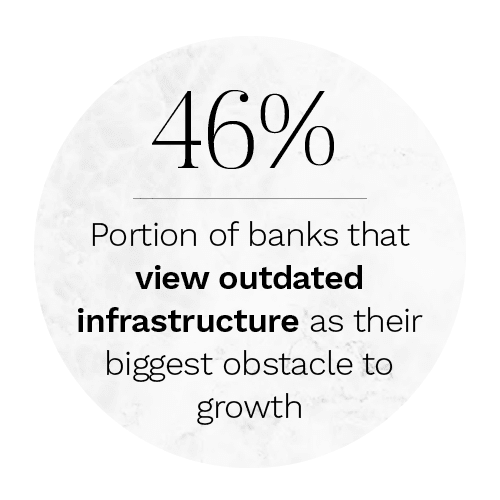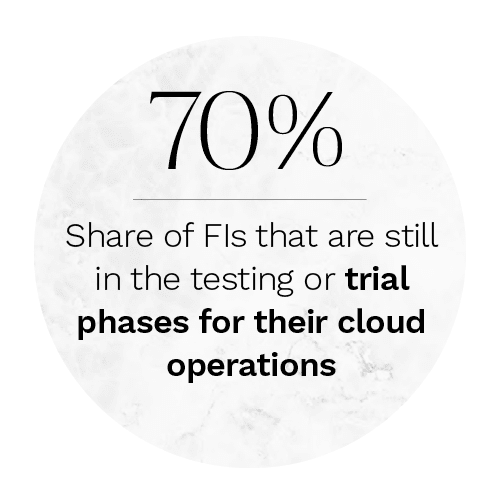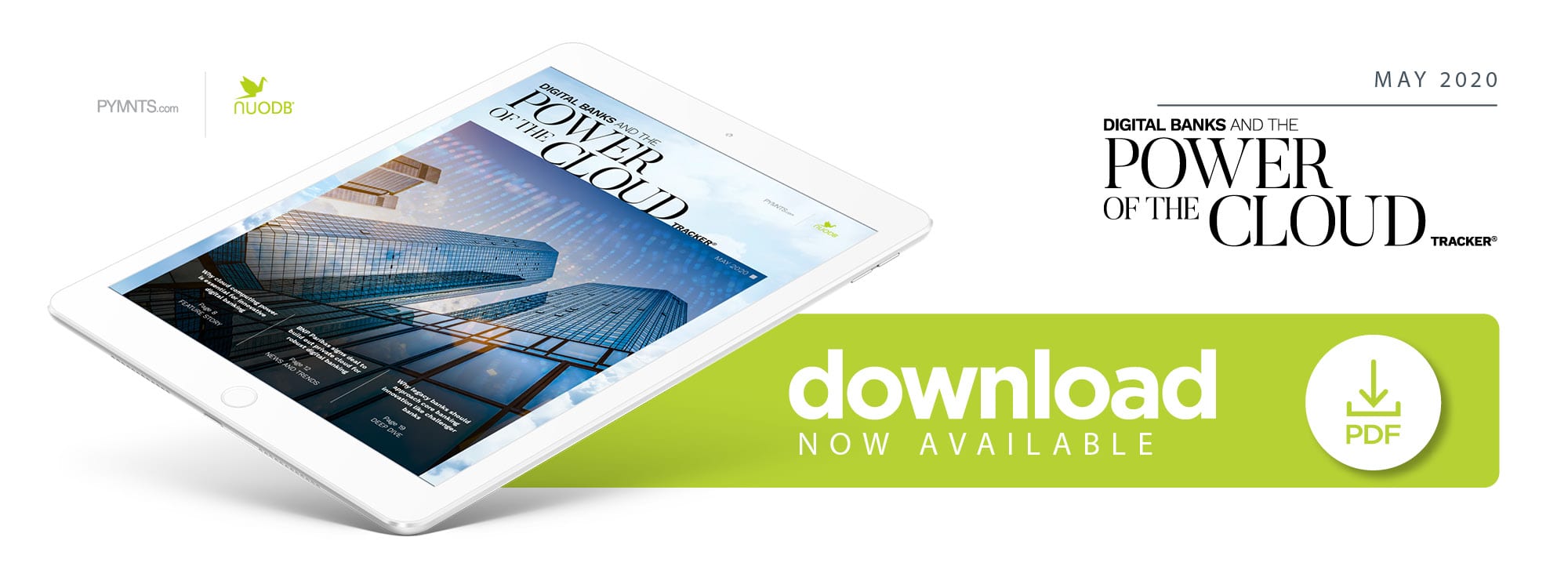Enabling this seamlessness may be difficult for some banks as they fight to keep their networks from being overwhelmed by a surge of online transactions, particularly established banks still running core banking solutions on outdated, legacy infrastructure. The frictions caused by this infrastructure could have lasting consequences for established FIs, potentially leading to frustrated customers abandoning ship for their competitors.
In the May edition of the “Digital Banks And The Power Of The Cloud Tracker,” PYMNTS examines how both legacy and challenger FIs are using cloud technologies to enhance their online offerings. The Tracker also analyzes the challenges established FIs are facing to innovate their platforms and why these banks must fundamentally shift their innovation strategies to meet these challenges.
Developments Around the Cloud Banking World
Legacy FIs are moving forward with their cloud-based plans despite infrastructure challenges. French bank BNP Paribas partnered with technology and software provider IBM, for example, to create a private cloud server for the bank. Private cloud servers are typically more attractive to financial entities than public clouds, since they restrict access and allow these entities to place more security measures for entry onto the server. BNP Paribas also announced that it plans to use this private cloud server to host a portion of its digital banking solutions for greater speed and seamlessness. The bank is joining the ranks of a number of established banks that are looking at cloud technologies with more intent, as one recent study found, with 70% of legacy FIs now in the trial or testing phase for these technologies.
Investment and asset management firm Blackrock is also looking to use cloud technologies to enhance its platform. The company will be moving its “Aladdin” network to the cloud to enable further growth, using the Azure cloud solution developed by technology provider Microsoft. Aladdin stands for Asset, Liability, Debt and Derivative Investment Network and is one of the platforms Blackrock employs to help it manage and monitor the assets under its watch. Switching this network to a cloud-based model will allow it to store more data, and therefore allow it to develop more personalized insights and further its own development.
Challenger banks are continuing to employ cloud technologies as legacy financial entities take their own steps forward. Malta-based financial services company Calamatta Cuschieri, for example, will be integrating the cloud into the online platform of its new challenger bank, Moneybase. Moneybase itself is set to launch at an undisclosed date later in 2020, and it will be completely cloud-based, according to its parent company. This model will potentially allow it to support a greater range of digital services, endearing it to more consumers who are searching for more personalized relationships with their FIs.
For more on these and other stories, visit the Trackers News & Trends.
Why Cloud Computing Is Critical to Banking Innovation
Consumers today are expecting speedy and secure access to digital tools, no matter the circumstances or FI in question. Supporting that access means banks of all sizes need to craft networks that can manage a daily flood of online transactions and data requests, while keeping the customer relationship seamless.  Using cloud technologies is one way to help support this, but banks must also think about the way they are providing these services differently as individuals become more fully-digital customers, says Ali Niknam, CEO and founder of European digital-only bank Bunq.
Using cloud technologies is one way to help support this, but banks must also think about the way they are providing these services differently as individuals become more fully-digital customers, says Ali Niknam, CEO and founder of European digital-only bank Bunq.
To learn more about how cloud computing is providing digital challengers with the support they need for seamless service, visit the Tracker’s Feature Story.
Examining the Legacy Infrastructure Challenges Hampering Cloud Innovation
Interest in cloud technologies has sparked in recent years, but many established banks have further ground to clear before these can be fully implemented. Forty-three percent of legacy banks are still running their core banking services on platforms that were designed with COBOL, a programming language now over 60 years old. This can cause difficulties for these banks as they seek to support an expanding network of digital tools and services for their customers. Moving to the cloud could help such FIs retain customer loyalty and grow their consumer bases in the face of a rising collection of digital-only challenger banks.
To learn more about the outdated infrastructure struggles impacting legacy banks, visit the Tracker’s Deep Dive.
About the Tracker
The “Digital Banks And The Power Of The Cloud Tracker®,” powered by NuoDB, examines the latest developments in digital banking, especially how banks are utilizing the cloud and other innovative tools to enhance and personalize finance.

 Financial institutions (FIs) have been adapting their platforms and technologies to better suit the needs of more digital consumers for decades, but the coronavirus has placed new importance and pressure on accelerating these efforts. Allowing customers uninterrupted access to their online financial accounts and processing digital payments quickly is critical during this time as brick-and-mortar branches are either closed or on limited hours.
Financial institutions (FIs) have been adapting their platforms and technologies to better suit the needs of more digital consumers for decades, but the coronavirus has placed new importance and pressure on accelerating these efforts. Allowing customers uninterrupted access to their online financial accounts and processing digital payments quickly is critical during this time as brick-and-mortar branches are either closed or on limited hours.





